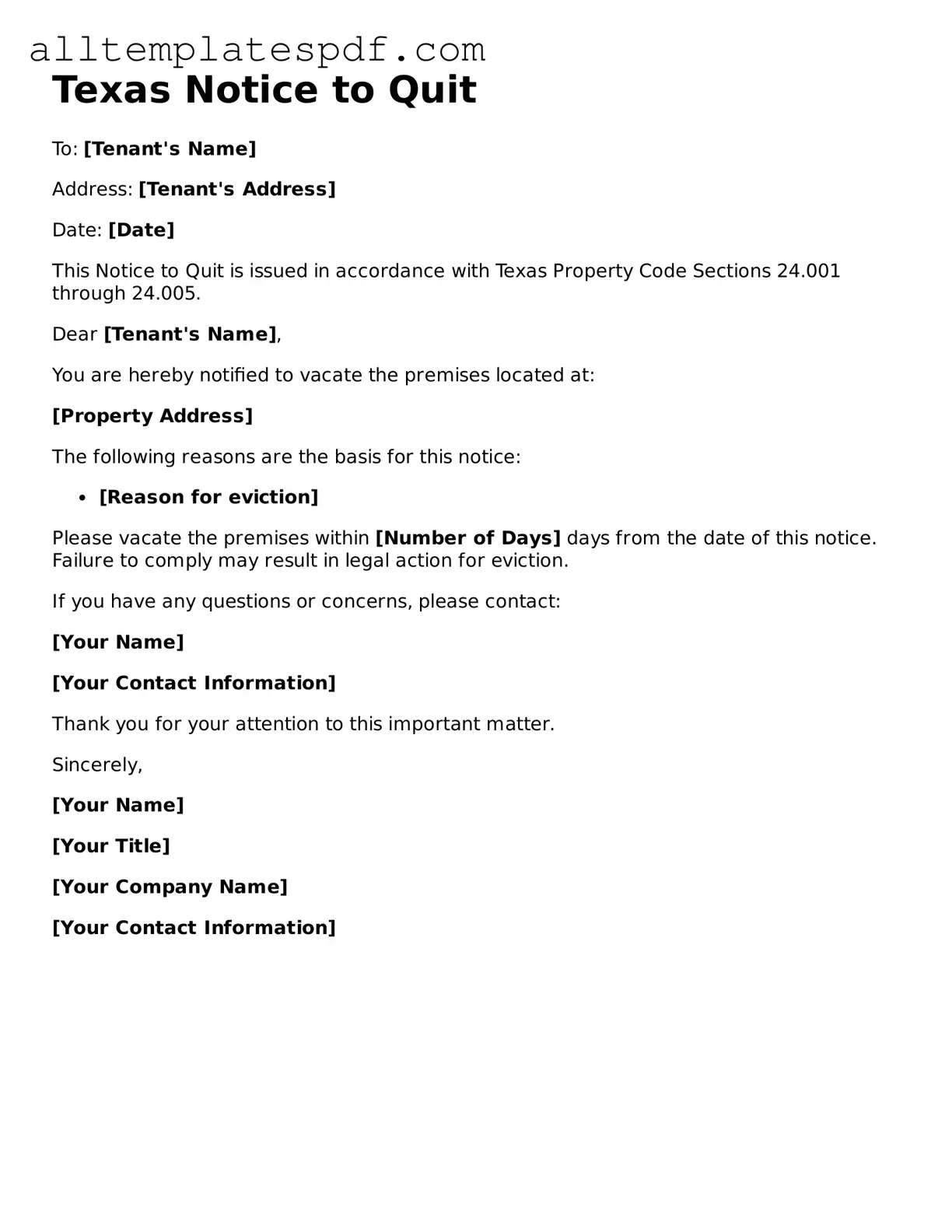Blank Notice to Quit Template for the State of Texas
The Texas Notice to Quit form is a legal document that landlords use to formally notify tenants to vacate a rental property. This notice is often the first step in the eviction process and outlines the reasons for termination of the lease. Understanding this form is crucial for both landlords and tenants to ensure compliance with state laws.
Ready to take the next step? Fill out the Texas Notice to Quit form by clicking the button below.
Open Editor
